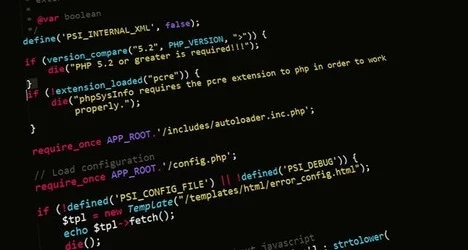Human Resources Department: Value Added vs. Overhead Cost
Add bookmark
Analyzing metrics is an important business practice for prediction-based modeling achieved by examining the data, but most HR practitioners are not versed in practicing analysis of metric-based data.
In addition, since HR is not a revenue center for the company, the staff will be slim at best for the work required, and few companies are willing to invest in a HR practitioner (lower level or higher level management) who’s major function is to analyze data and generate reports. Human resource practitioners (HRP) usually provide metrics and reports to the executive team to perform the analysis, but the C-suite management may not have the insight to what the data is saying where HRPs can explain the qualitative details.
Jac Fitz-Enz, Ph.D., updated his 2002 book, The ROI of Human Capital to provide a more concise roadmap for human resource practitioners to quantify responsibilities as strategic business partners. How many HR managers have been told, "Human resources is an overhead expense and…has no revenue value?" Fitz-Enz strives is to provide workforce and employee engagement solutions for business, including human capital measurement and benchmarking.
What is interesting about the SMEs helping Fitz-Enz compile the expertise in this book are many are from international sources – best-selling authors of HR books or owners of HR consulting organizations from South America, France, Sweden, and Pakistan. "Analytics…is not just a set of statistical tools. It is a mental framework, a quantum leap in human capital management. It is the logic framework that gathers, organizes, and interprets data—to deliver the knowledge your organization needs to grow and thrive," according to Fitz-Enz.
Chapter 1 elaborates upon the phenomena of technology where an industry is so dramatically changed by an innovative idea it is transformative. It points out that even while the ‘business’ may change, the management of the human capital remains the same as decades ago – disconnected, with no strategic value – and must also seek the ‘disruptive idea’ to change HR to predictive management with the use of analytics. Fitz-Enz introduces Predictive Analysis defining his four-phase HCM:21®predictive model (human capital management in the 21stcentury), explaining how to put the model into practice in part three, and part four predicts the future for human capital analytics.
According to Fitz-Enz, the steps of analytics are as follows: recording work, relating work to organization’s goals, benchmark comparison, understanding behaviors and ends, and predicting future outcome from what happened before. The vital point is the prediction is identifying the most valuable key performance indicators (KPIs) because those measure what is important to implement strategy for success. Ironically, organizations with expensive data collection systems in place, may not know how to analyze the data effectively. The point is, good decision-making capabilities are key to using the data.
Fitz-Enz provides a list of external and internal forces as a result of the ‘scan’ of forces affecting the three fundamentals of a business: human, structural, and relational capital and how all interact, illustrated by a matrix template. Another point driven home is risk as another central element, even in prediction for strategic planning. A question in almost every organization is, "How does one flip a low-morale, poor-performance workforce into a high-performing team?" Referring to Maslow’s ‘Hierarchy of Needs,’ the idea of embedding and customizing a value proposition for employees who want to learn to grow within their career, as well as feeling like they belong in the company, is illustrated while noting pay does not always equal performance. Many companies provide almost identical benefits and compensation demonstrating a high-value human capital company needs to research and analyze legacy workers to find out what makes an employee ‘stick.’ The mid-1990s evolution of ‘total rewards’ taught business to think holistically and consider more than dollar-based compensation, but include work/life balance, career/professional development, and a desirable/comfortable culture and workplace environment. By 2006, the model was based on a foundation of organizational culture, business and human resources strategy to incorporate and support the total rewards strategy, compensation, benefits, work/life, performance and recognition, and career development opportunities. This foci attracted, motivated, and retained employees who were more likely to have job satisfaction and engagement, resulting in the achievement of performance and results, increasing the business revenues and short- and long-term goals.
The ROI of Human Capital also describes the change of isolationist business practices at the beginning of the dotcom bust in the 1990s to the globalization of international economy affecting HR’s human capital planning strategies. Capability planning must be aligned with HR functions: business vision, values, and development. The focus is to be competitive with human capital by targeting key positions to which to make individuals ready, reduce down-time on vacancies, accelerate accommodation for new hires or promotions, reduce risk of poor hires, and aim toward zero turnover. Creating a ‘playbook’ for this practice includes research and scenario development, strategic options, and acquisition of resources and building of capabilities. Poor measurement of employee engagement affect circa 80% of organizations in the US and the concept is elaborated upon by a discussion of hygiene versus motivation factors, and defining new scientific terms of hucametrics (science of tracking and applying analytical human capital data to predictive performance for employees and business), which is parallel to the science of sabermetrics (predicting the best course of action for sports games) and numerati (predicting customer purchase preferences).
Another lesson emphasized is that no one operates, and no decisions are made, in a vacuum. HR doesn’t have the volume of production a manufacturer may have in being able to use Lean Six Sigma practices, but there are processes that can benefit from streamlining. This relates to staffing, controllable versus uncontrollable turnover categories, looking at people as ‘investments of capital,’ performance to productivity time, and reduction of turnover.
The degrees of business knowledge intelligence vary from from "what happened?", to "how much/often is this happening?", up to predictive analysis asking, "what is most likely to happen?" and "what is the best that can happen?" The ultimate goal is accumulation of business intelligence providing a basis upon which interpretation can provide an understanding of variables, including their interdependence, and measurement of the six core processes: recruiting, learning/development, performance, talent assessment, leadership planning/development, and engagement for worker satisfaction. An HR scorecard is a useful illustration of frequency of analysis for talent acquisition, employee engagement, operations, retention, demographics, and training and development.
Who needs HR metrics?
The market for this type of information is human resource management practitioners with a keen eye for supporting their existence within a corporate entity, but also line managers, as well as chief financial officers, chief operating officers, and chief executive officers to understand why the HR function is an important underpin of any business’ functions. HRPs are now more than simply the paper-shufflers that performed administrative tasks. HRPs should consider themselves as human capital managers. They should make it a practice to regularly perform analytics to help the organization keep pace with external and internal factors of business operations within their core business practice.
HRPs can the use Fitz-Enz metric-based HCM:21®model to focus on supporting the capability of the workforce, reinforcing engagement in the workplace, and providing incentives for performance. While human capital management may never be a profit center, it can provide ‘added-value’ to an organization by providing analysis for procedures, staffing, development, increased retention, and decreased turnover to streamline life-cycle employment actions through effective modeling. Performance measurements provided by the HRPs can be used by CFO’s, COO’s, and CEO’s as a basis for strategic planning, operations decisions, and predictive indicators for vital decision-making are for corporate short- and long-term planning stages.
Relevance
The role of HR practitioner with the business environment has changed over the last hundred years from supervisor of workers to strategic partner with the C-Suite executives for business short- and long-term objectives and goal setting. HRPs must know how to collect, analyze, and interpret data from human capital metrics to be of value to the company as a decision maker and influencer. The HR department will most likely never become a revenue generator, but it can certainly reduce the overhead cost of being by reducing costs for other ‘silos’ within a company.

















